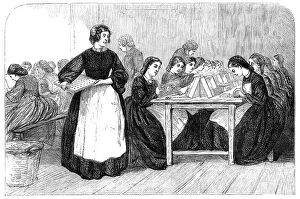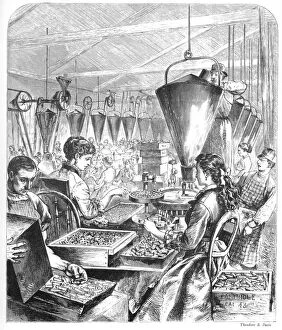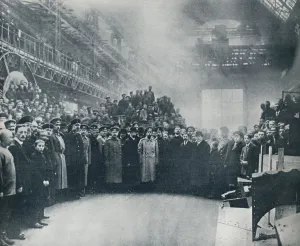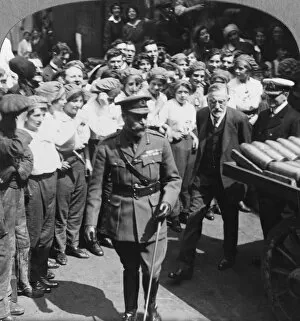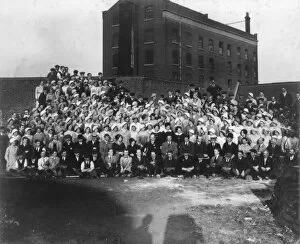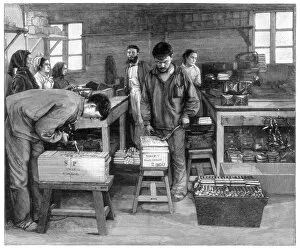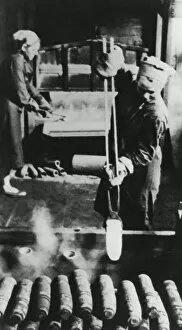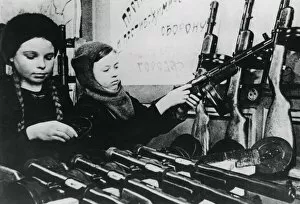Munition Worker Collection
"Unsung Heroes: The Munition Workers of World War I" During the tumultuous years of 1914-1918, a silent army emerged on the home front - the munition workers
All Professionally Made to Order for Quick Shipping
"Unsung Heroes: The Munition Workers of World War I" During the tumultuous years of 1914-1918, a silent army emerged on the home front - the munition workers. These brave individuals, both men and women, played an integral role in supporting their nations during one of history's most devastating conflicts. In c1914-c1918, women joined the workforce en masse as "Women Workers for the War. " In a powerful image captured by an unknown creator in c1920, we witness their determination and resilience. Leaving the Munition Works depicted by artist Winifred Knights showcases these women stepping out into a world forever changed by their contributions. Not to be overshadowed, male munitions workers also made significant strides. In Brixton's School of Building in London in 1915, they could be found laboring diligently in engineering shops. Their dedication and skill were vital to ensuring that ammunition production remained at full capacity. The war effort demanded every ounce of effort from its workers. Women munitions workers meticulously applied coats of paint on aerial bombs during World War I (c1914-c1918). This delicate task required precision and attention to detail as they prepared these deadly weapons for battle. Horace Walter Nicholls' artwork from 1938 transports us back to 1917 when a bustling munitions factory operated tirelessly amidst war-torn surroundings. This poignant depiction reminds us that even amidst chaos and destruction, ordinary people worked tirelessly behind closed doors to protect their nations. Scotland too had its share of dedicated individuals who answered the call for support. Girl munition workers operating lathes within Scottish mills demonstrated remarkable skill and adaptability during this time (c1914). Even beyond national borders, munition factories played crucial roles worldwide. The Putiloff Munition and Engineering Works became a hub of activity where Czar Nicholas II himself was photographed among workmen in 1914.

